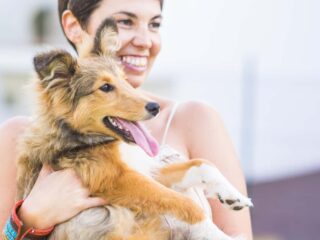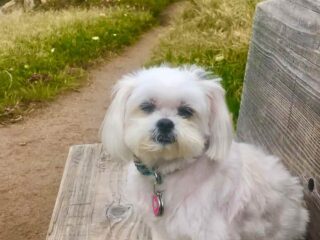Soft and generously thick the fur on a Belgian Malinois can be one of the most distinguishing features of the breed.
Malinois have thick short fur that is straight, does not curl, and sheds quite a lot. We will take a deep dive into the best way to care for their beautiful coats.
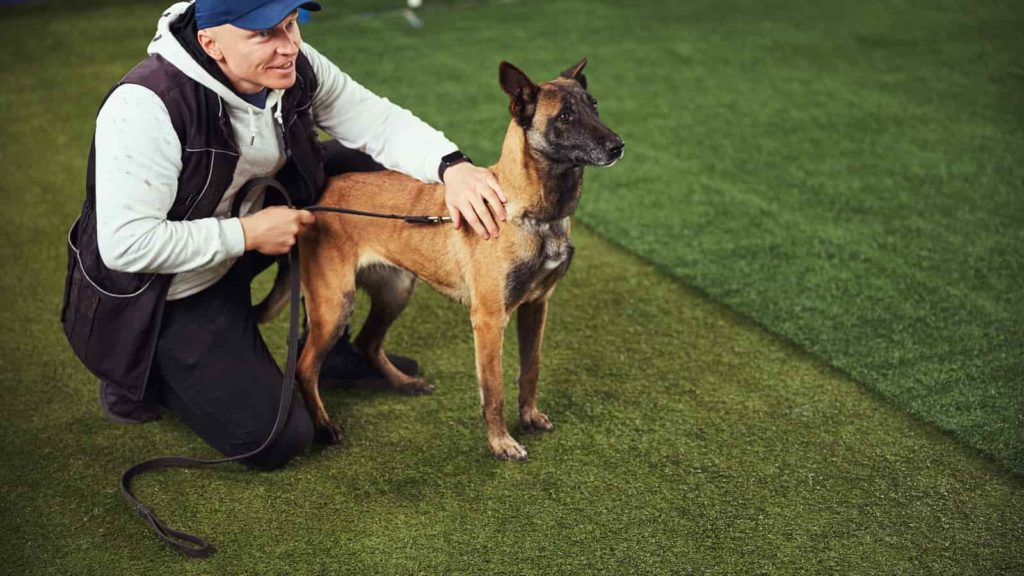
The first question we need to get out of the way is….
Do Belgian Malinoises have hair or fur?
Yes, there is a difference!
Technically Belgian Malinoises have fur, not hair. Belgian Malinoises have a double coat and all double-coated dogs have fur, not hair. Chemically fur and hair are the same, but hair and fur have different growth cycles. Fur sheds more easily and is shorter and more coarse than hair.
Here is a table to help you see the difference.
Disclaimer: This post may contain affiliate links. We only recommend high-quality products that are used and recommended by real owners. If you use these links to buy something we earn a small commission.
Fur | Hair |
Double Layer | Single-layer |
Shorter in length | Longer in length |
Denser | Thinner |
Shorter Growth Cycle | Longer Growth Cycle |
Courser | Silkier |
Sheds easily | Sheds less |
As you can see hair and fur have many differences. Strangely enough, they are still made of the same protein called keratin, this is also what nails and skin are made from.
So why is it important to know if your dog has hair or fur? Because there is a big difference in how you take care of and groom a dog with fur as opposed to dogs with hair.
Belgian Malinoises not only have fur they have two thick layers of it. The top coat or guard hair consists of longer courser fur and the undercoat consists of shorter thinner more fuzzy fur.
Both of these types of fur help protect a Malinois in different ways.
What kind of coat (hair) do Belgian Malinoises have?
Belgian Malinoises have 2 coats of fur. The soft undercoat helps regulate their temperature and a course thick overcoat or guard hair that helps protect them from the elements.
The texture of Malinoises’s hair is in between soft and coarse. Show coats will feel softer and thicker. Working coats will be a bit sleeker and not quite as soft.
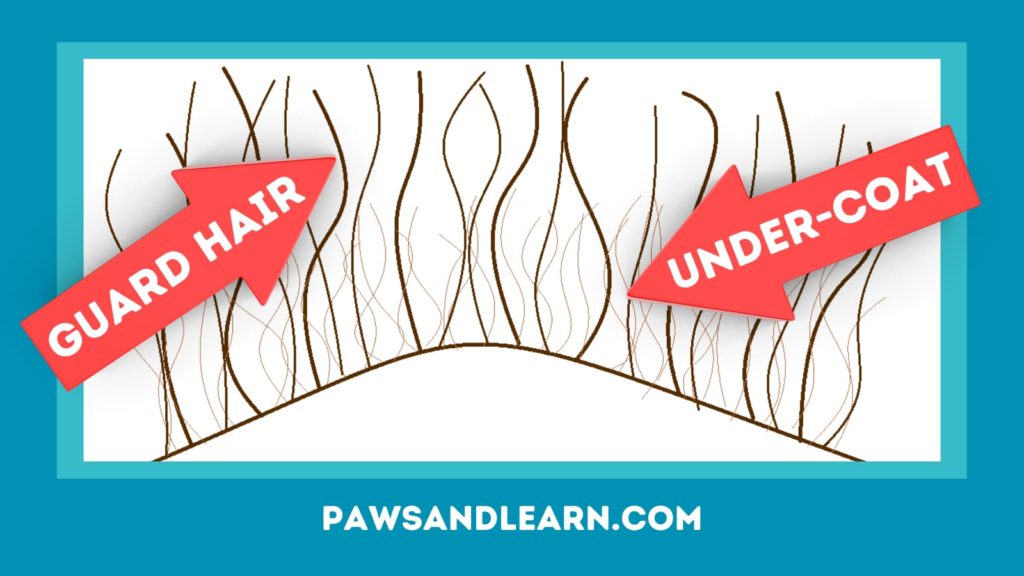
Belgian Malinois undercoat
a Belgian Malinoises undercoat is the short thin fuzzy hair that helps to regulate the dog’s temperature. It has an amazing ability to keep the dog warm in the winter as well as cool in the summer.
One of the reasons Malinoises shed so much has to do with this amazing undercoat. Every spring a Malinois will “blow its coat” which means that over the span of several weeks its thick winter undercoat will shed and a completely new undercoat will grow.
This new undercoat is specially designed to help them stay cool in the summer. Think of it as a light jacket in the summer and a heavy coat in the winter.
Similarly in the fall time they again over several weeks lose this undercoat and regrow a new thicker woolier undercoat meant to trap more body heat. This will help them stay warm in the cold winter months.
Tip: It’s extremely important to keep an undercoat brushed and matt-free. It can’t do its job if it’s all tangled up with debris and mats.
Belgian Malinois top coat/guard hair
As we discussed even though Malinoises have fur, not hair it’s generally acceptable to use the terms interchangeably. Their topcoat is even referred to as guard ‘hair’ and not guard ‘fur’.
The top coat on a Malinois is the longer coarser hair. This hair is there to protect the dog from the elements. Also called the guard hair it is water-resistant and meant to keep debris insects and other items from reaching a Malinoises tender skin. This long hair also keeps your dog from getting sunburnt.
The topcoat sheds year-round but also needs to be brushed regularly to keep it from forming mats.
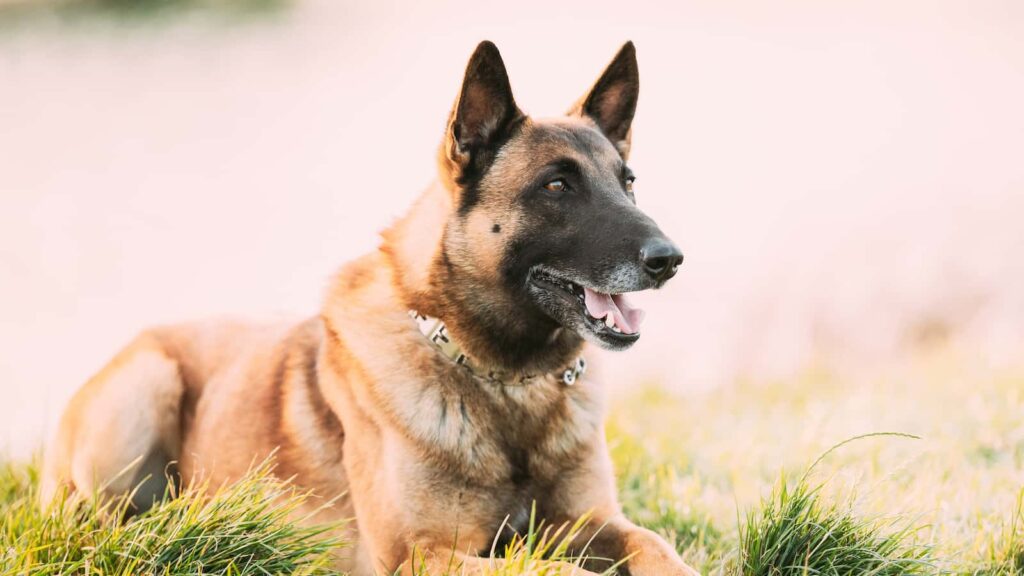
How to groom a Belgian Malinois (complete grooming guide)
There are many aspects to think about when keeping your Malinois well-groomed. Here is a list of all the things you need to do to keep your Malinois groomed.
- Brush their hair regularly. Once a week, more during shedding season.
- Bathe your Malinois every 6 weeks to 6 months depending on how active your dog is.
- Control the shedding, especially when your dog blows its coat twice a year.
- Keep your dog’s teeth clean and healthy.
- Make sure their ears are clean and healthy.
- Groom and care for their tail.
- Caring for their paws and feet.
Each of these areas of grooming a Belgian Malinois is so important that they deserve careful and detailed instruction. Click on the links above to learn more.
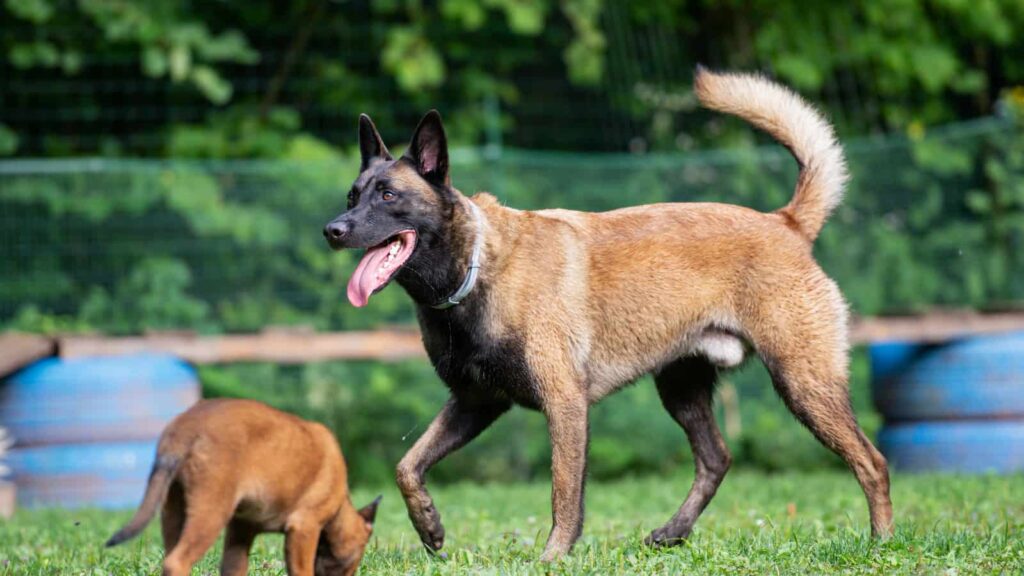
Do Belgian Malinois Have short hair?
All purebred Belgian Malinoises have a shorter sleeker less thick and less puffy coat than other long-haired Shepherds. The short sleek hair covers their entire body. The hair on its head and ears is the shortest. The hair on its neck, chest, and tail is a bit longer but still considered short.
Belgian Shepherds that have long hair include the Tervueren which has long fawn, red or grey hair, the Groenendael which has long black hair, and the Laekenois which has a rough reddish fawn coat.
There really isn’t a big difference in the length of coat on Malinoises. It’s generally the thickness of the undercoat that can be dramatically different. Malinoises bred in colder climates may have thicker coats. Genetics also make a big difference in whether a Malinois has a very thick coat.
Should you cut a Belgian Malinois’s hair?
Many owners wonder if it is ok to trim their Malinois’s hair. Trimming your Belgian Malinois’s hair is not needed, but a small percentage of owners prefer to. I
Generally, you do not need to trim or cut a Belgian Malinois coat. You should also avoid cutting the hair too short or shaving the dog completely. Trimming certain areas of the dog such as the sanitary regions or around the paws is ok and good for the dog’s health.
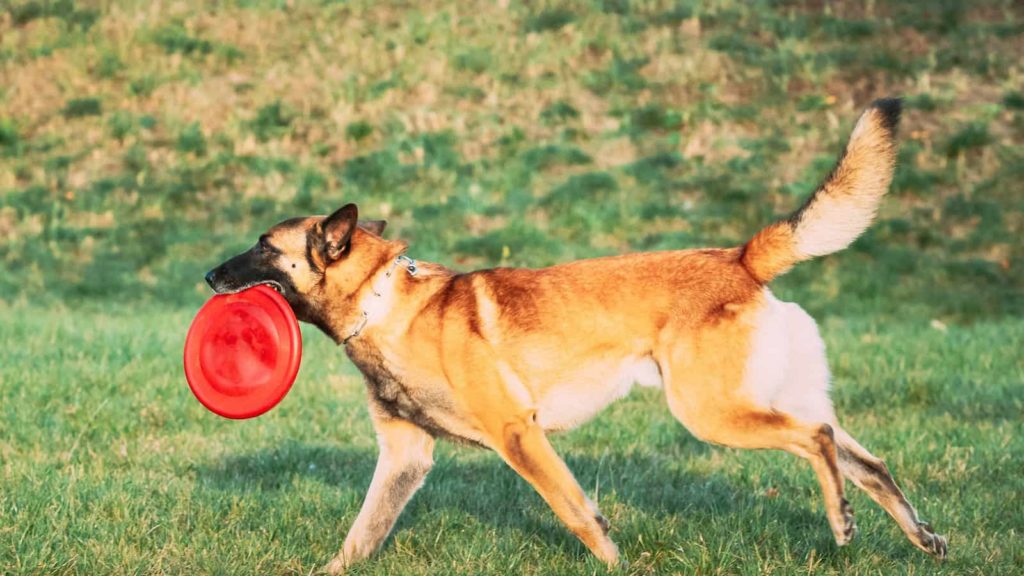
Why you shouldn’t cut a Belgian Malinois’s hair?
Because of the special nature of an Malinoises double coat cutting the coat too short can result in the undercoat being the same length or longer than the outer guard hair. This becomes a problem because then the outer coat can’t do its job to repel water and protect the dog from the elements.
The undercoat often will grow faster than the guard hair because the two times a year that it blows its coat it is genetically engineered to grow and replace fast! If you cut or shave an Malinoises coat the undercoat will grow back and overtake the outer coat not allowing the outer coat the time it needs to grow back properly.
Cutting your dog’s hair can result in a different textured coat that is very fuzzy and easily matted.
Definition: -To blow coat- is referring to when a dog loses a lot of its undercoat at once and seems to be shedding a lot in a short period of time. This generally happens during season changes of spring and fall.
How short can you cut a Malinois’s Hair?
Sometimes for very matted dogs, you will need to cut part of the hair in order to get the mat out. Even though sources like Wiki How say it’s ok to shave your dog with a razor you should avoid that if at all possible.
Belgian Malinois hair should not be cut more than 1/4 to 1/2 an inch off its coat. Certain areas like paws, sanitary areas, and legs can be cut somewhat shorter.
Belgian Malinois hair length
Genetics will determine how long a Belgian Malinois’s hair will grow. Males tend to have thicker and fuller hair, but that’s not always the case.
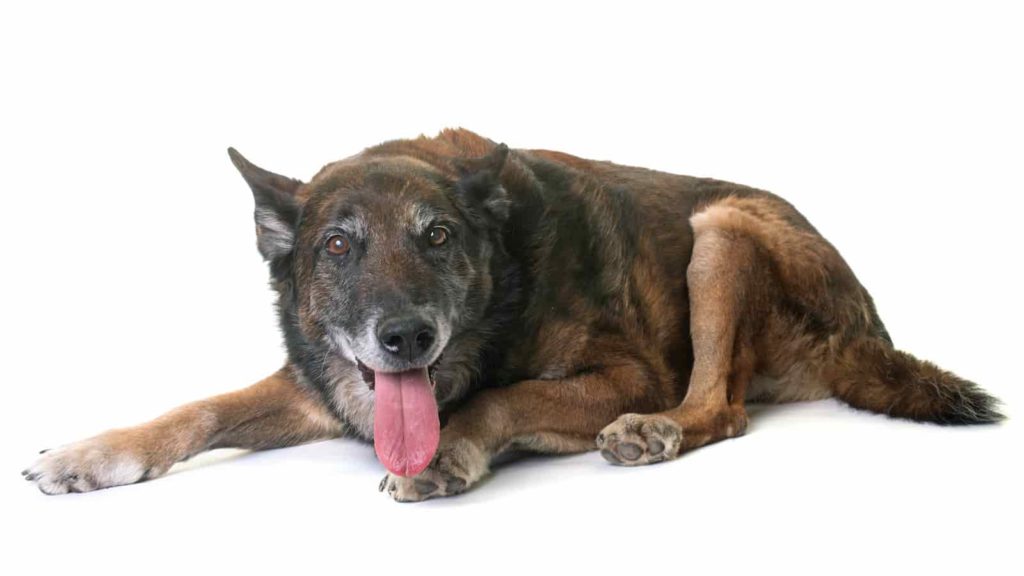
Belgian Malinois hair loss
There are several reasons that your Belgian Malinois may be losing hair. We will discuss a few, but it’s important that you consult your dog’s vet to get a professional medical opinion.
- Atopy – Environmental or food allergies that cause hair loss on your dog. This could be seasonal. You may want to treat it with antihistamines prescribed by your vet.
- Mange– a parasitic skin disease caused by microscopic mites. Look for patches of fur missing and a lot of itching. Many cases will clear up on its own, more severe cases should be treated by a vet.
- Fleas – Very tiny wingless insects that will bite and feed off of your dog. Look for small red bumps on your pet’s skin. Fleas may irritate your dog enough that he will be biting or scratching so much his fur starts to come off.
- Hormonal Problems – Cushing’s disease or hypothyroidism can cause hormonal imbalances that may cause hair to fall out. If your dog is not biting or scratching its tail but they are still losing hair this may be the cause. Watch for a tired or lethargic dog. This can be treated with medication or surgery. Consult your vet.
- Old age– If your Malinois is a senior (9-12 years old) hair loss on its tail may be caused by aging. If this is the case you can do your best to help them feel comfortable and make sure that they are not in any pain.
Tip: Make sure your Malinois gets dried off completely every time it gets wet. Because of the thick double coat, any wetness that gets trapped close to the skin can cause irritation and bacteria growth.
Belgian Malinois losing hair around the eyes
If your Malinois is losing hair around its eyes it’s likely because they have an infection called conjunctivitis (commonly known as pink eye). This infection will cause puffy watery eyes as well as pinkness or redness and itching. Your dog may itch and paw at its eyes which can cause hair loss.
In any case of hair loss, it’s best to get advice from a vet.
Pro Tip: If you are not able to get a hold of a vet near you, or you want to avoid an unnecessary ER trip, there are online resources that you can turn to. Here is our best recommendation:
Pawp: a 24/7 digital clinic for pets that connects you to an experienced vet
Why we love it:
🐾 Answers 24/7! 🐾 No waiting! 🐾 Get Answers Online with Local Vets! 🐾 Quick Response Time! 🐾 Easy Sign UP!
Try Pawp 7 Days For Free
Do Belgian Malinoises have straight wavy or curly hair?
Belgian Malinoises don’t have curly hair. Their hair is generally straight or slightly wavy. If your Malinois has exceptionally wavy or curly fur then it is probably mixed with another curly-haired dog breed.
Certain parts of Malinoises may be wavier behind the ears, along the back, and under the chest are parts of the Malinois. The wave may also cause the dog’s hair to be more prone to matting in those areas.
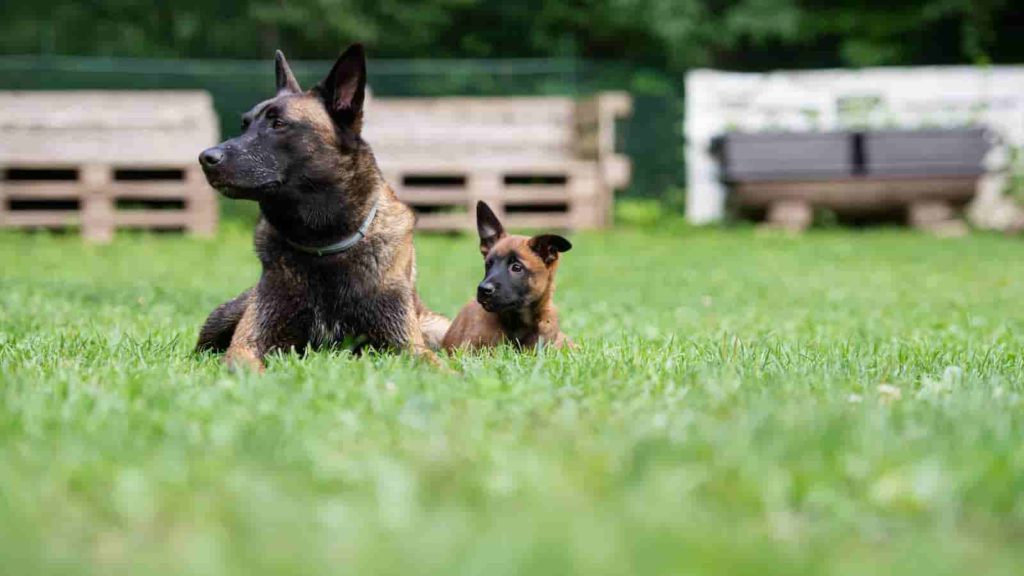
How fast does Belgian Malinois hair grow?
Generally, Malinoises’ hair will replace itself about every 6-12 months. How fast a Belgian Malinois’s hair grows depends on how healthy the dog is and what kind of nutrition it receives, as well as how well it is groomed.
A matted and dirty coat will not grow as fast as a clean and well-groomed coat. An extremely neglected dog coat could cause hair loss as well.
Brushing a dog regularly will help get rid of dirt and debris as well as stimulate growth and distribute oils into the dog’s coat that can enhance hair growth.
The undercoat of a dog grows and replaces itself much faster than the guard hair. This is part of why it’s important to not shave a double-coated dog.
While we strive to give the most accurate and helpful information about your pet’s health that we can, this article is meant to be informational only and not medical advice. Never disregard, avoid or delay in obtaining medical advice from your veterinarian or other qualified veterinary health care provider regardless of what you have read on this site or elsewhere.


